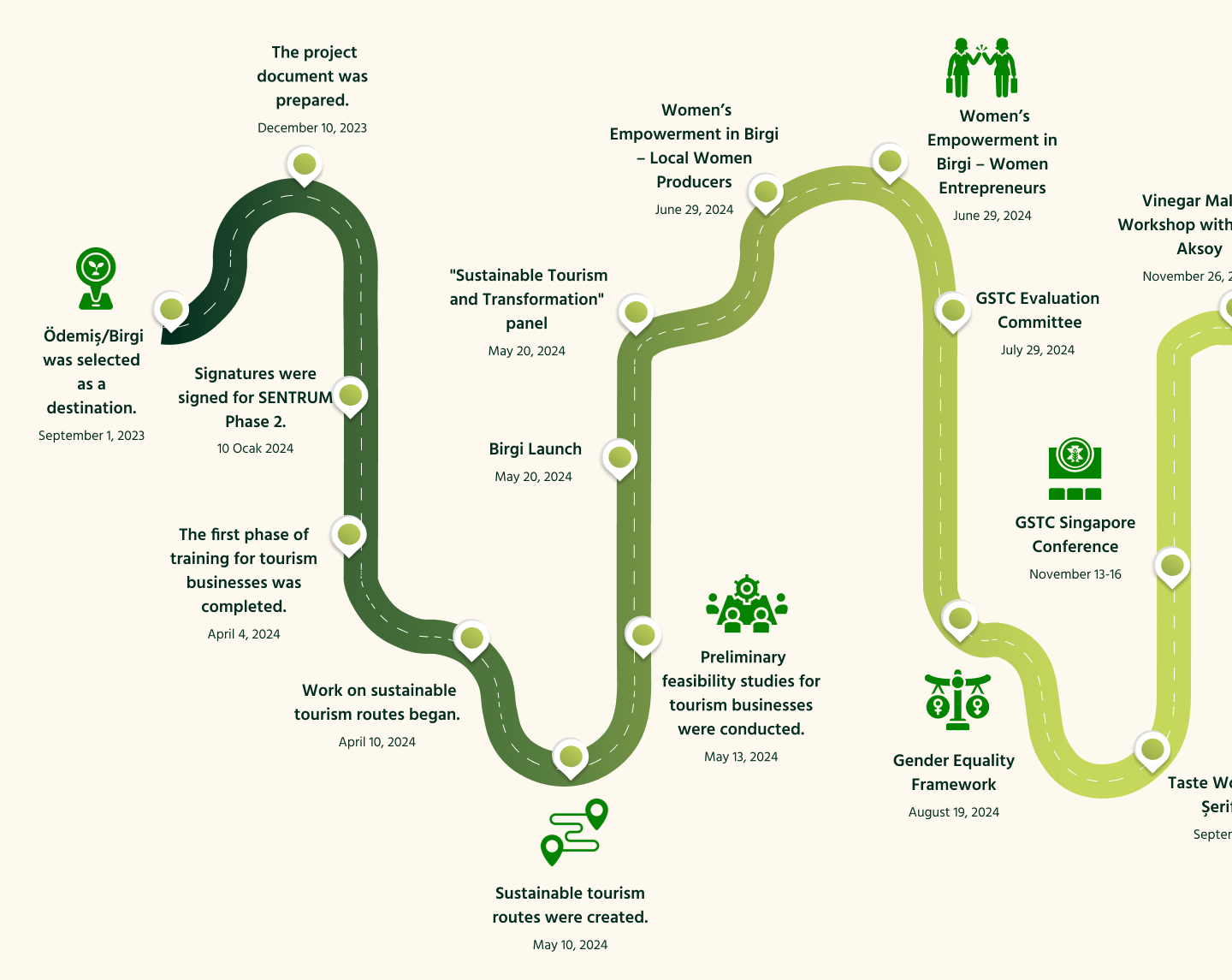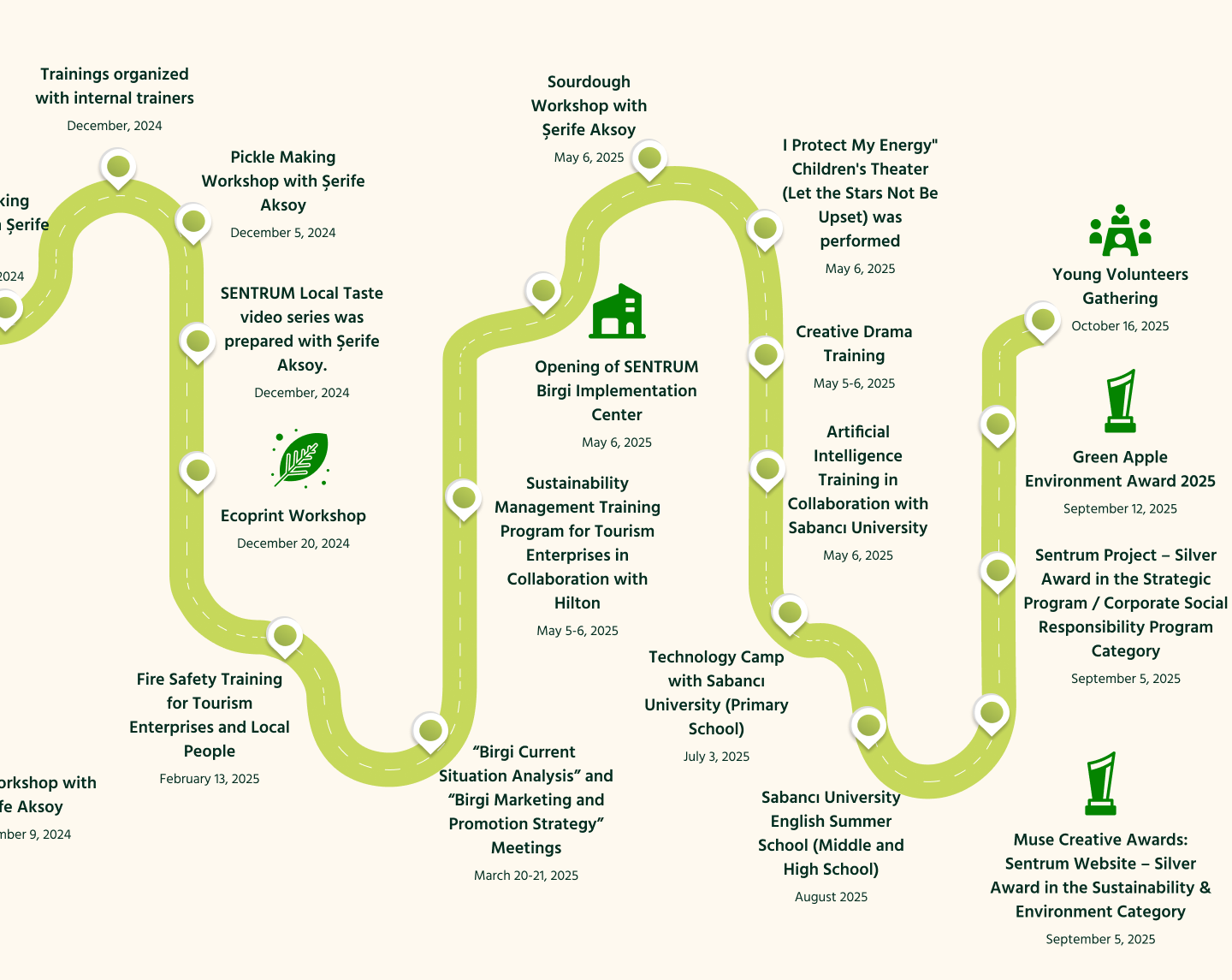Layers of Birgi
Layers of Birgi
the Conservation Model
the Conservation Model
the Conservation Model
International Recognition of Birgi
by SENTRUM
Sustainability Approach
Introduction of Ödemiş, Birgi
Located in Ödemiş District of Izmir Province, Birgi has been home to many civilizations since ancient times. Birgi was dominated by the Phrygian Civilization (750-680 BC), Lydia Civilization (680-546 BC), Persian Kingdom, Kingdom of Pergamon, Roman and Byzantium Empires. The city was the capital of the Aydinids in the 13th and 14th century during the period of Anatolian Beyliks. Later, it was dominated by the Ottomans in 1426.
The Transformation Journey of Birgi
The Transformation Journey of Birgi
Two architectural structures that reflect the traditional architectural texture best in town are Ulu Mosque as one of the most successful examples of its period with its wooden ornament dominated mihrab and minbar and Çakırağa Mansion which stands out with its wooden craftsmanship. Birgi is zoned with the purpose of conservation as per the decision of the Turkish Ministry of Culture and Tourism Izmir 1st Board for the Protection of Cultural Heritage dated 11.04.1996 and numbered 5963. The entire town is under protection. The town also houses natural, archaeological, and urban protection sites.

